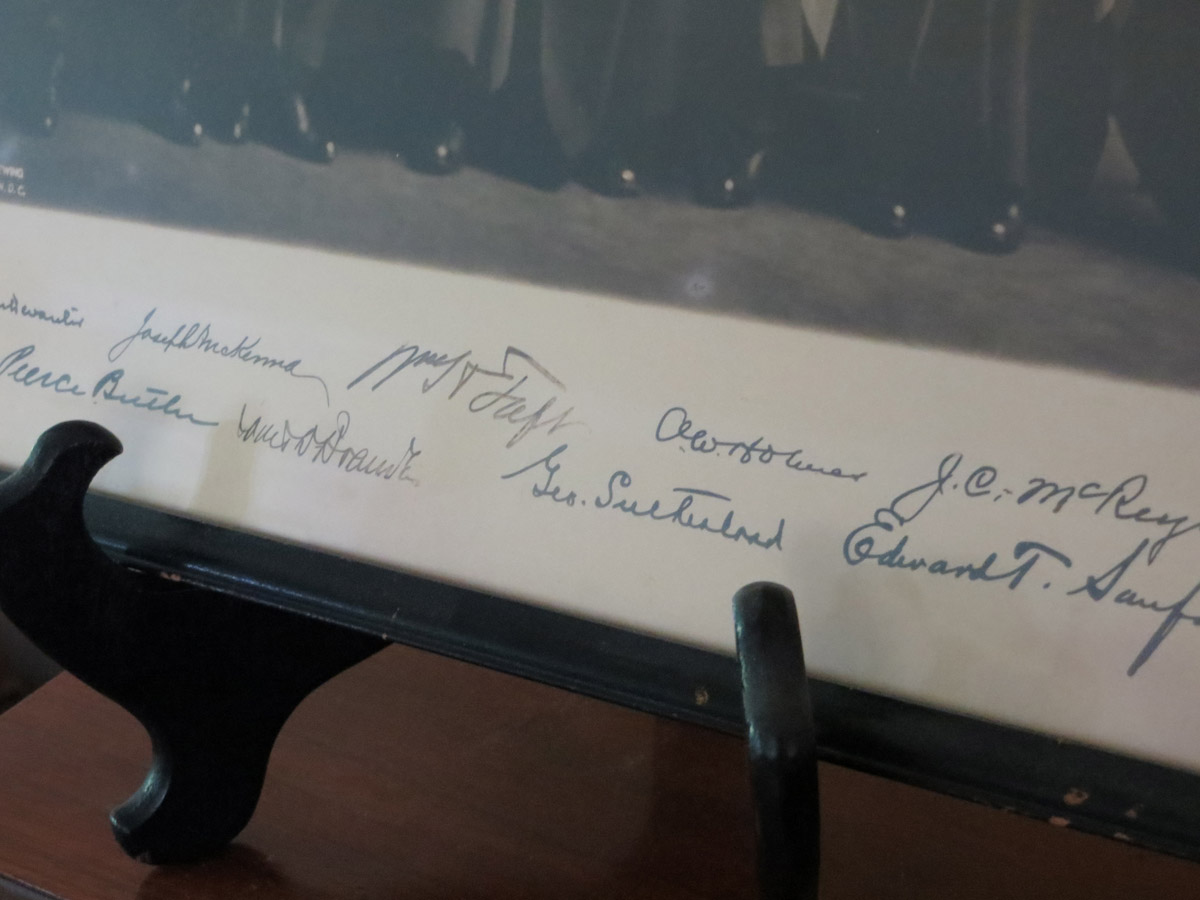Signed Photograph of the Taft/Holmes/Brandeis Era Supreme Court



From the Chambers of the First Jewish federal Judge.
Jacob Trieber was the first Jew to become a federal judge in the United States, serving from 1900 to 1927 as judge for the U.S. Circuit Court, Eastern District of Arkansas. In that position, he issued nationally important rulings on controversies that included antitrust cases, railroad litigation, prohibition cases, and mail fraud;...
Jacob Trieber was the first Jew to become a federal judge in the United States, serving from 1900 to 1927 as judge for the U.S. Circuit Court, Eastern District of Arkansas. In that position, he issued nationally important rulings on controversies that included antitrust cases, railroad litigation, prohibition cases, and mail fraud; some of his rulings, such as those promoting civil rights and wildlife conservation, have implications today. His broad interpretation of the constitutional guarantees of the Thirteenth Amendment, originally overturned by the post-Reconstruction U.S. Supreme Court, was validated sixty-five years later in a landmark 1968 equal opportunity case. Chief Justice William H. Taft admired Trieber’s work and was often in contact with him.
A 13 1/2 by 16 inch black and white Harris & Ewing photograph of the U.S. Supreme Court circa 1923, signed by all of the justices: William H. Taft, Louis D. Brandeis, Oliver Wendell Holmes, Willis Van Devanter, Pierce Butler, Joseph McKenna, George Sutherland, Edward Sanford and James C. McReynolds. This is the very picture that hung in Judge Trieber’s chambers, and is still in the original frame. We obtained this from the Trieber descendants and it has never before been offerred for sale.

Frame, Display, Preserve
Each frame is custom constructed, using only proper museum archival materials. This includes:The finest frames, tailored to match the document you have chosen. These can period style, antiqued, gilded, wood, etc. Fabric mats, including silk and satin, as well as museum mat board with hand painted bevels. Attachment of the document to the matting to ensure its protection. This "hinging" is done according to archival standards. Protective "glass," or Tru Vue Optium Acrylic glazing, which is shatter resistant, 99% UV protective, and anti-reflective. You benefit from our decades of experience in designing and creating beautiful, compelling, and protective framed historical documents.
Learn more about our Framing Services









































































































